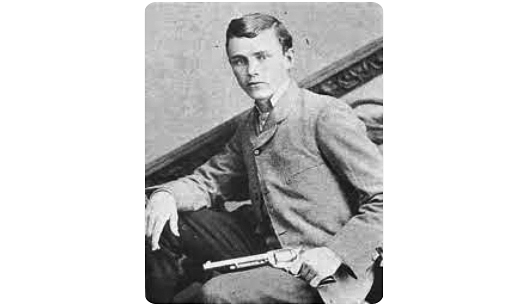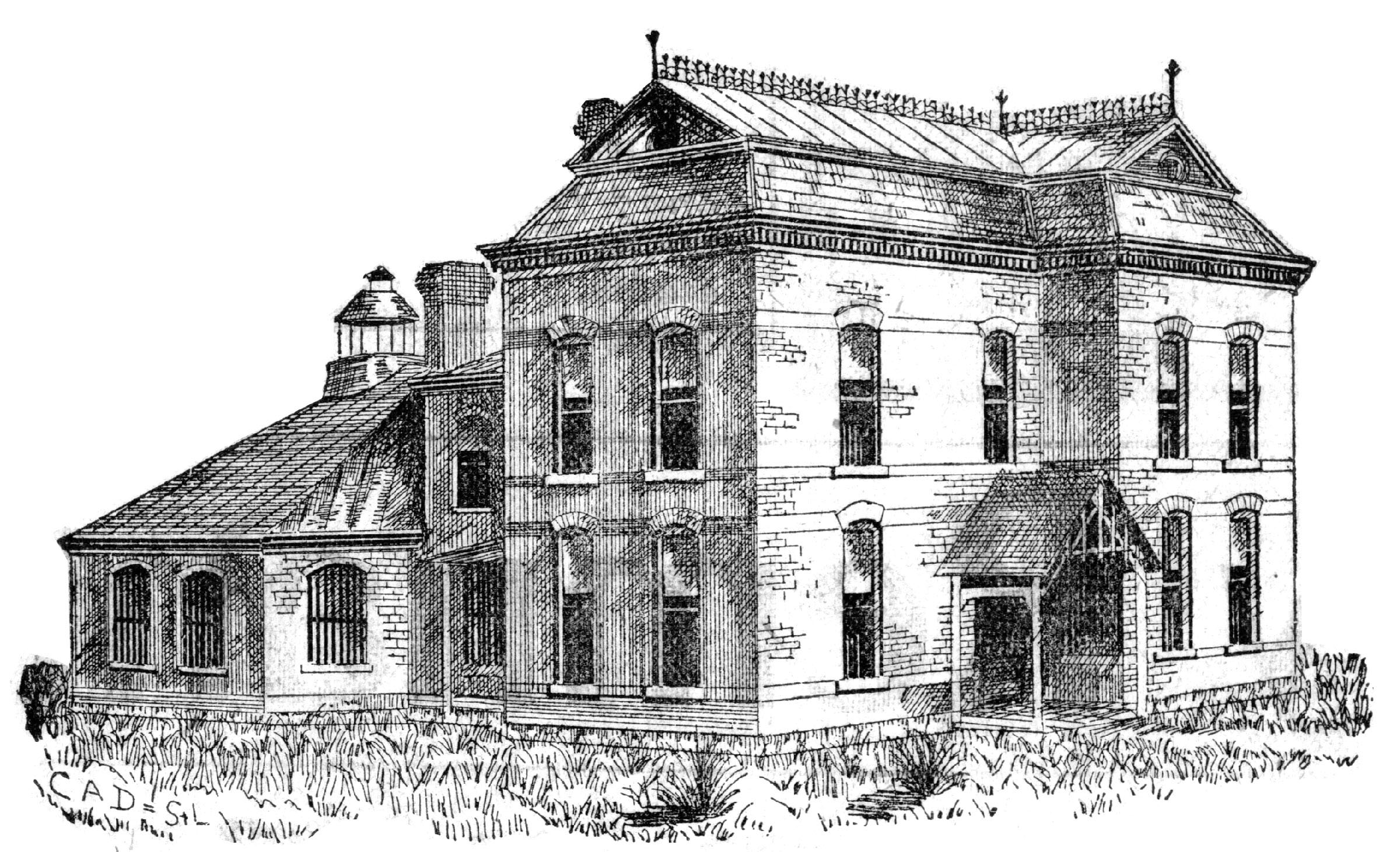History says Jesse James was living in St. Joseph under the alias of Thomas Howard when he was shot and killed by Robert Ford at his home on April 3, 1882.
Or was he?
Researchers are digging up Jesse James in hopes of getting enough evidence to begin DNA testing on the remains to establish if Jesse was killed on April 3, 1882, or if his death was faked so he could live out his life under aliases.

Grave of Jesse James in Mt. Olivet Cemetery at Kearney, MO. The tall marble tombstone marking his grave at the James Farm for 20 years was replaced by a government-issued military headstone in the family plot at Mt. Olivet Cemetery in 1902. In 1995, forensic experts apparently proved that Jesse’s remains were in fact in this grave, so that all the men who claimed that Jesse had escaped and grown old peacefully were proved to be imposters.
Waggoner Carr, a former attorney in private practice, maintains that the corpse in the grave is Charlie Bigelow. Bigelow was a member of the James gang and bore a resemblance to Jesse.
Carr represents clients who claim to be descendants of Jesse James. Their family records indicate that Jesse James was not killed and buried in 1882, but lived to be over 100 years old. They maintain Jesse James died in Grandbury, TX, in 1951.

Jesse James lies in his coffin in 1882 after being assassinated in St. Joseph, MO, by his friend Robet Ford. (Library of Congress)
Dr. James E. Starrs, a professor of forensic science and a lawyer, who is leading the team of investigators, will use mitochondrial DNA testing testing an other analysis to determine if the body in the grave is Jesse James.
“There’s a certain historic mystery that needs to be verified,” Dr. Starrs said. “DNA can solve these mysteries.”
However, after digging all day Monday, researchers found a partially collapsed wooden coffin, some bone fragments, and fabric. Historical records indicate that Jesse was buried in a metal coffin and researchers believe that the headstones may have been reversed and they may uncovered his wife, Zerelda’s coffin.
A crowd estimated at between 300 to 500 people descended on the Mt. Olivet Cemetery in Kearney, MO, to watch the unearthing of the world’s most famous outlaw. The dig continues Tuesday using trowels, brushes and dustpans. Scientists hope to gather enough remains to begin laboratory testing.
In addition to the DNA test, gender tests and a toxicology test will be conducted. Another dispute to be resolved through the exhumation is the type of weapon that killed Jesse James.

Bobby Ford assassinated outlaw gang leader Jesse James (who often used Mr. Howard as an alias) to claim a $10,000 reward and, consequently, endured everlasting infamy for shooting James in the back.
Bob Ford confessed to shooting Jesse James but gave conflicting account as to the gun he used, a .44 or .45 caliber weapon. When Clay County acquired the James Farm in 1978, an archeological dig was done on the original grave site. They found a .38 caliber spent bullet, several small human bones and a tooth. There was speculation that the .38 bullet was one of the bullets that wounded Jesse when he was shot during the Civil War and had never been removed from his body.
Analysis of those remains indicated they belonged to a white male around age 38. Jesse was 34 when he was shot and buried in the front yard of his family’s home.
Men who had known Jesse most of his life were called in to identify the body. Scars from Civil War bullet wounds along with the missing tip of the middle finger of his left hand made the identification certain.
Following an inquest in St. Joseph, Jesse’s body was taken back to Kearney by train. Hundreds of people filed past his open casket in the lobby of a local hotel. A St. Joseph newspaper account said: “it is mere curiosity, doubtless, to look upon the form an face of the boy who had grown up among them who had made for himself a name in crime reflecting an infamous notoriety upon not only the town of Kearney and the county of Clay, but a great commonwealth.”
Jesse was buried in the southwest corner of front yard of the James family home on April 6, 1882. Jesse’s body was taken from its grave at the James Farm and moved to Mt. Olivet Cemetery to lie next to his wife, Zee, in 1902. However, the stories still persist that Jesse James was not killed by Bob Ford, but continued to live to be more than 100 years old. Many say that Ford’s account of the killing just doesn’t add up.

Zerelda Samuel, Jesse James’s mother, stands by his original grave at the James Farm located northeast of Kearney, MO. Zerelda wasn’t above making a little money off her son’s notoriety. She sold rocks from his grave for 25 cents. After 20 years in the grave outside his mother’s farmhouse, Jesse James’s body was exhumed in 1902 and reburied in the family plot in Mt. Olivet Cemetery at Kearney, MO.
Bonafide relatives of the James family and those who claim to be descendants of the outlaw were at the site for the dig.
National and international news representatives were also in the cemetery to observe and record the dig. The Discovery Channel is also filming the project for a special presentation.
The dig, exhumation and related expenses are being funded by George Washington University and Scientific Sleuthing Inc., a non-profit group. Dr. James E. Starrs is on the faculty of George Washington University.
Research team members are also trying to get a court order to exhume the partial remains at the James Farm. Starrs said he would like to reunite the bones at the farm with those in Mt. Olivet when they are reburied.
Tests on the remains will be done at Kansas State University and at the Kansas City Regional Crime Laboratory.
The DNA tests will be done on a portion of bone matter at Penn State University if a suitable bone is found. The DNA test will settle questions of James’ descendants and determine if the remains are indeed those of Jesse James. Gender tests will be conducted at Kansas State University. Team members will conduct toxicology test on fingernails and toenails at Florida State University to check for drugs.
James’ descendants will have to make decisions regarding the casket in which the remains will be placed and whether or not to have a ceremony when the remains are re-interred this fall.
— reprinted from the July 19, 1995,
issue of The Lawson Review (Vol. 114, No. 22
(images added for this digital post)

